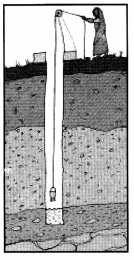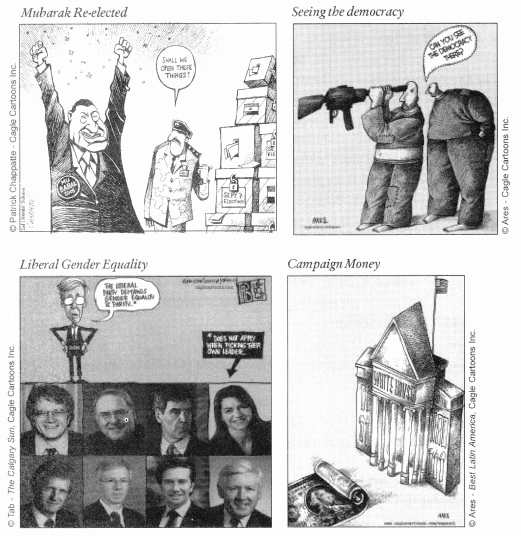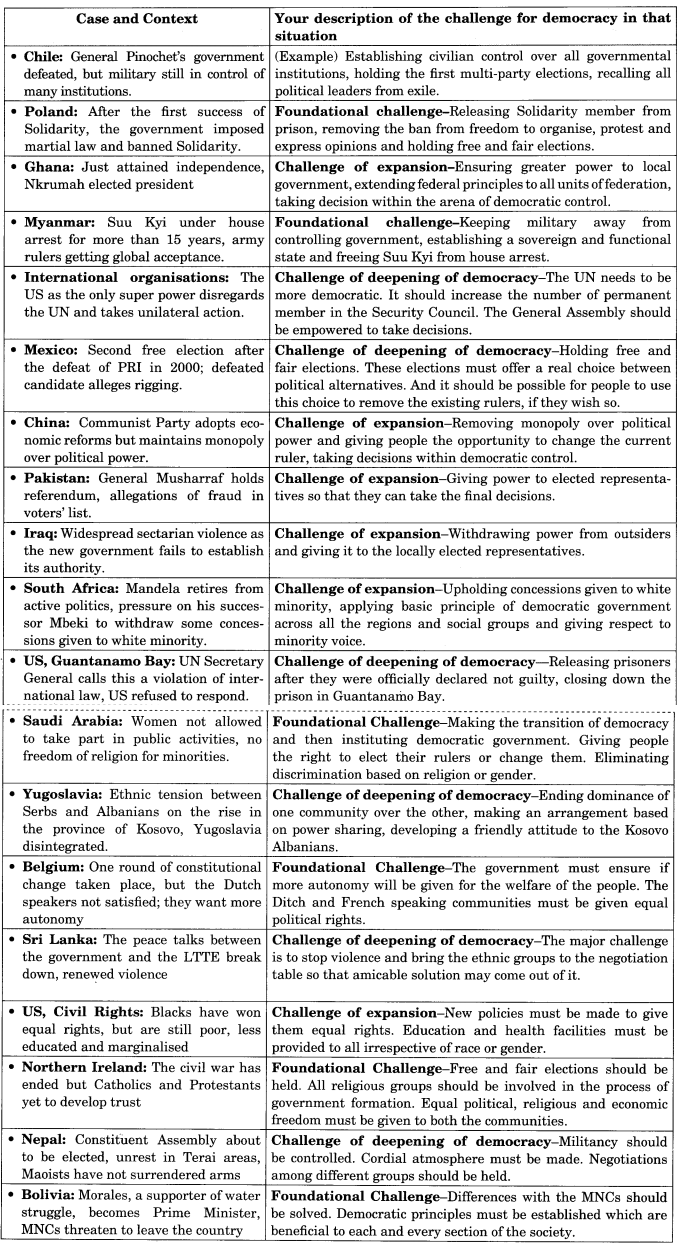Check the below NCERT MCQ Questions for Class 10 Economics Chapter 3 Money and Credit with Answers Pdf free download. MCQ Questions for Class 10 Social Science with Answers were prepared based on the latest exam pattern. We have Provided Money and Credit Class 10 Economics MCQs Questions with Answers to help students understand the concept very well. https://mcqquestions.guru/mcq-questions-for-class-10-economics-chapter-3/
Money and Credit Class 10 MCQs Questions with Answers
Choose the correct option:
Money And Credit Class 10 MCQ Question 1.
Which one of the following is a formal source of credit?
(a) Traders
(b) Cooperative societies
(c) Moneylenders
(d) Friends and relatives
Answer
Answer: (b) Cooperative societies
Money And Credit MCQ Question 2.
Which one of the following is the appropriate meaning of collateral?
(a) It is the sum total of money borrowed from banks.
(b) The amount borrowed from friends.
(c) It is an asset of the borrower used as guarantee to a lender.
(d) The amount invested in a business.
Answer
Answer: (c) It is an asset of the borrower used as guarantee to a lender.
Class 10 Economics Chapter 3 MCQ With Answers Question 3.
Which one of the following is a modern form of currency?
(a) Paper notes
(b) Gold
(c) Silver
(d) Copper
Answer
Answer: (a) Paper notes
MCQ On Money And Credit Class 10 Question 4.
Which one of the following is the newer way of providing loans to the rural poor, particularly women?
(a) Cooperative Banks
(b) Grameen Banks
(c) Self-Help Groups
(d) Moneylenders
Answer
Answer: (c) Self-Help Groups
Money And Credit Class 10 MCQs Question 5.
Which of the following is the main informal source of credit for rural households in India?
(a) Friends
(b) Relatives
(c) Landlords
(d) Moneylenders
Answer
Answer: (d) Moneylenders
Class 10 Money And Credit MCQ Question 6.
Name the system in which the double coincidence of wants is an essential feature.
(a) Barter system
(b) Money economy
(c) Global economy
(d) None of these
Answer
Answer: (a) Barter system
MCQ Money And Credit Question 7.
Grameen Bank of Bangladesh was started in
(a) 1960s
(b) 1970s
(c) 1980s
(d) 1990s
Answer
Answer: (b) 1970s
MCQ Of Money And Credit Class 10th Question 8.
In a SHG, most of the decisions regarding loan activities are taken by
(a) Banks
(b) Members
(c) Non-government organisation
(d) Cooperative
Answer
Answer: (b) Members
MCQ Of Money And Credit Class 10 Question 9.
Which of the following is not an informal source of credit?
(a) Money-lender
(b) Relatives and Friends
(c) Commercial Banks
(d) Traders
Answer
Answer: (c) Commercial Banks
MCQs Of Money And Credit Question 10.
In which country is the Grameen Bank meeting the credit needs of over 6 million poor people?
(a) Bhuta
(b) Sri Lanka
(c) Bangladesh
(d) Nepal
Answer
Answer: (c) Bangladesh
MCQ Of Chapter Money And Credit Class 10 Question 11.
Which is not the main source of credit from the following for rural households in India?
(a) Traders
(b) Relatives and friends
(c) Commercial Banks
(d) Moneylanders
Answer
Answer: (a) Traders
MCQs On Money And Credit Question 12.
What portion of deposits are kept by the banks for their day to day transaction?
(a) 10%
(b) 15%
(c) 20%
(d) 25%
Answer
Answer: (b) 15%
Money And Credit MCQ Class 10 Question 13.
Which households take more loans from the formal sector?
(a) Poor households and rich household.
(b) Well off households and households with few assets.
(c) Poor households and well off households
(d) Well off households and rich households.
Answer
Answer: (d) Well off households and rich households.
Class 10 Economics Chapter 3 MCQ Question 14.
Which among these is an essential feature of barter system?
(a) Money can easily exchange any commodity
(b) It is based on double co-incidence of wants
(c) It is generally accepted as a medium of exchange of goods with money
(d) It acts as a measure and store of value
Answer
Answer: (b) It is based on double co-incidence of wants
Money And Credit MCQ Questions Question 15.
Which one of the following is the main source of credit for the rich households?
(a) Informal
(b) Formal
(c) Both formal and informal
(d) Neither Formal nor informal
Answer
Answer: (b) Formal
Question 16.
Which one of the following is not a formal source of credit?
(a) Commercial Banks
(b) State Bank of India
(c) Employers
(d) Co-operatives
Answer
Answer: (c) Employers
Question 17.
Which one of the following agencies issues currency notes on behalf of the government of India?
(a) Ministry of Finance
(b) Reserve Bank of India
(c) State Bank of India
(d) World Bank
Answer
Answer: (b) Reserve Bank of India
Question 18.
Formal Sources of credit include :
(a) money lenders
(b) co-operatives
(c) Employers
(d) Finance companies
Answer
Answer: (b) co-operatives
Question 19.
Which one of the following is NOT an informal sector loans for poor rural household in India?
(a) Commercial Banks
(b) Moneylenders
(c) Traders
(d) Landlords
Answer
Answer: (a) Commercial Banks
Question 20.
Which one of the following is not a modern form of money?
(a) Demand Deposits
(b) Paper currency
(c) Coins
(d) Precious metals
Answer
Answer: (d) Precious metals
Question 21.
Identify the formal source of credit:
(a) Cooperative societies
(b) Moneylenders
(c) Traders
(d) Landlords
Answer
Answer: (a) Cooperative societies
Question 22.
Who helps the borrowers to overcome the problem of lack of collateral?
(a) Self-help group (SHG)
(b) State government
(c) Employers
(d) Moneylenders
Answer
Answer: (a) Self-help group (SHG)
Question 23.
Which of the following is not a modern form of money?
(a) Paper notes
(b) Demand deposits
(c) Silver coins
(d) None of the above
Answer
Answer: (c) Silver coins
Question 24.
Formal sources of credit include
(a) banks
(b) moneylenders
(c) employers
(d) all the above
Answer
Answer: (a) banks
Question 25.
Rate of interest charged by moneylenders as compared to that charged by banks is:
(a) lower
(b) same
(c) slightly higher
(d) much higher
Answer
Answer: (d) much higher
Question 26.
Which state accounts for maximum percentage of SHGs (self-help groups) in bank credit?
(a) Andhra Pradesh
(b) Tamil Nadu
(c) Kerala
(d) Karnataka
Answer
Answer: (a) Andhra Pradesh
Question 27.
Who supervises the credit activities of lenders in the informal sector?
(a) Central Bank of India
(b) Commercial banks
(c) Moneylenders
(d) None
Answer
Answer: (d) None
Question 28.
At present which form of money is increasingly used apart from paper money?
(a) Commodity money
(b) Metallic money
(c) Plastic money
(d) All the above
Answer
Answer: (c) Plastic money
Question 29.
Currency is issued in India by :
(a) commercial banks
(b) regional rural banks
(c) nationalised banks
(d) Reserve Bank of India
Answer
Answer: (d) Reserve Bank of India
Question 30.
The part of the total deposits which a bank keeps with itself in cash is
(a) zero
(b) a small proportion
(c) a big proportion
(d) 100 percent
Answer
Answer: (b) a small proportion
Question 31.
System of exchanging goods for goods is called:
(a) monetary system
(b) credit system
(c) barter system
(d) exchange system
Answer
Answer: (c) barter system
Question 32.
Money
(a) eliminates double-coincidence of wants
(b) acts as a common measure of value
(c) acts as a standard of deferred payments
(d) all the above
Answer
Answer: (d) all the above
We hope the given NCERT MCQ Questions for Class 10 Economics Chapter 3 Money and Credit with Answers Pdf free download will help you. If you have any queries regarding Money and Credit CBSE Class 10 Economics MCQs Multiple Choice Questions with Answers, drop a comment below and we will get back to you soon.



